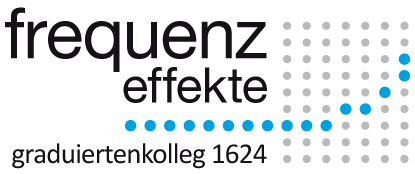Bella Diekmann (eingereicht)
Word production in sentence context: An ECoG investigation
| Erstbetreuer | Prof. Dr. Peter Auer |
| Zweitbetreuer | Prof. Dr. Tonio Ball |
| Abstract | Combining neuroscience and corpus based linguistics the project at hand investigates neural activity during naturalistic, spontaneous speech production. The analysis is based on a multimodal corpus of simultaneously recorded audio, video and electrocortigographic data that were recorded for preneurosurgical diagnostics of epilepsy patients at the University Medical Center Freiburg. Electrocorticography (ECoG) has a high temporal and spatial resolution and is very robust against artifacts. It can thus reliably capture both the spatial organization and the temporal dynamics of the neuronal signals underlying the patients’ speech production. In line with usage-based theory, the project pursues the question how our experience with language is reflected in brain activity during the production of words in their syntactic context. An important aspect of the experience with language is the probability of linguistic elements. According to usage-based theory, words that are frequently experienced (together) have a stronger mental representation, which is why they are usually accessed faster and easier. A large number of psycholinguistic studies has indeed shown that the processing of linguistic elements is influenced by their probability. Correspondingly, neurolinguistic studies have observed different activation patterns for words with high and low probabilities. The project at hand uses the frequency and the transitional probability of words in order to capture their probability and to operationalize linguistic experience. In addition, several other linguistic properties are considered, such as the syntactic position of a word or its duration. The residuals of these parameters are then correlated with neural activity. It is expected that the production of words with a low frequency or transitional probability is associated with more processing effort, which should be reflected in an increase of neural activity in the high-gamma frequency range (70 –150 Hz). Event-related increase of activity in this frequency range has been shown to be a reliable marker of cortical activation during speech production. Different than expected, the frequency or transitional probability of the words and the neural activity in the high-gamma band are not significantly correlated. Indirectly, however, the experience with language is reflected in neural activity. A cluster of electrodes implanted on ventral premotor cortex (vPMC) shows significant responses in the high-gamma band during sentence production and a significant correlation with the sentence position of the words. At these electrodes, neural activity declines across the course of the sentence. It can be assumed that the contextual constraints concerning the words to be produced increase as a sentence is being completed. Correspondingly, the contextual probability of a word should increase across the course of a sentence. At least indirectly, the syntactic position of a word thus captures its probability. Contrary to electrodes located on the vPMC, a correlation with the syntactic position of a word can definitely be excluded for several electrodes that are implanted on Brodmann area 44 (BA 44) and also show significant responses in the high-gamma band during sentence production. Whereas the response of electrodes on the vPMC can be considered to be time- modulated, electrodes on BA 44 show a sustained response. vPMC and BA 44 in posterior frontal cortex thus recruit two different temporal response patterns during naturalistic, spontaneous sentence production. The anatomical organization of the two different response types corresponds to a gradient along the central sulcus. The project at hand complements the findings of neurolinguistic studies that observed different activation patterns in these two frontal areas and attributed different functions to them. The time-modulated response profile in vPMC may reflect a decrease of planning-related activity and an increase of contextual constraints across the course of a sentence. The sustained response pattern, which was observed in BA 44, could be related to the control of articulation and the sequencing of speech motor commands. To conclude, the project at hand reports for the first time and on the basis of naturalistic, spontaneous speech data that time-modulated responses in vPMC and sustained responses in BA 44 constitute a gradient along the central sulcus during sentence production. |
| Disziplin | Linguistics |
| Sprachen | German |
| Forschungsrichtung | Neurolinguistics |
| Schlüsselbegriffe | Electrocorticography, speech production, spontaneous speech, frequency, usage based theory |


